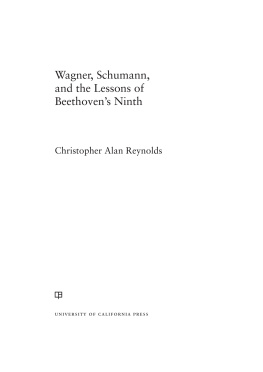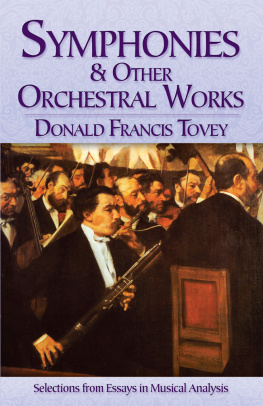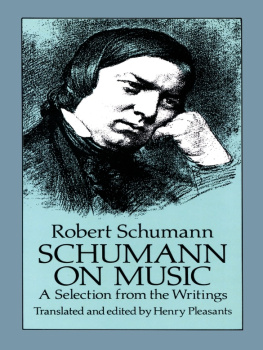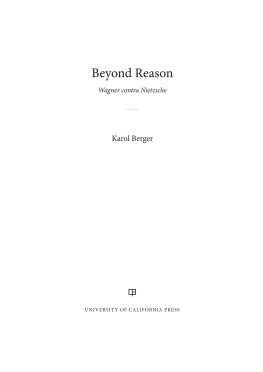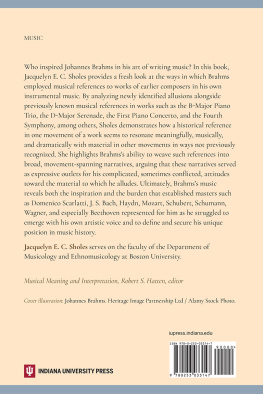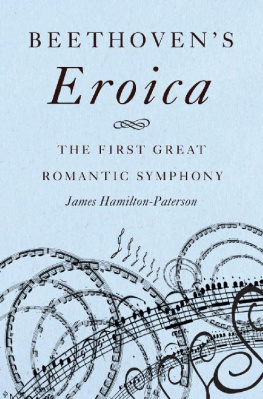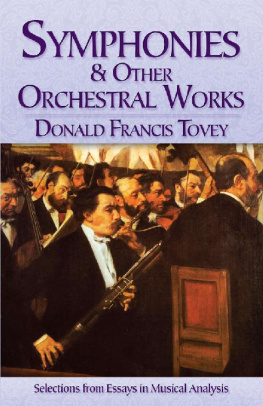Preface
When in fall 2007 I began to write this book, I had in mind something very different. My sabbatical-year plan was to take several projects that I had begun and bring them together by stressing a few of the themes they shared. Most obvious to me at that point was my interest in analyzing pairs of works, identifying the musical features they shared, and then using those observations to say something new about the works individually. I had just published my comparison of Gershwins Porgy and Bess and Alban Bergs Wozzeck and thought that perhaps that article could serve as both a chapter in the book and a model for how I would proceed with other pairings. My method in the Gershwin-Berg confrontation was a kind of musical-historical triangulation. There are the two works to compare, of course, but their reciprocal interpretation is guided by some biographically or historically relevant document. In my study of Porgy and Bess , Willi Reichs analysis of Wozzeck from 1927 gave focus to the comparisons of music and drama; indeed, it made it possible to identify the many points in common in the first place.
My intention was to gather a series of confrontations that were to have included a chapter on how Wagners opera The Flying Dutchman can be understood as a free, but thorough, reworking of Beethovens Ninth Symphony; I also wanted to write on Brahms and how his exploration of various forms of rhapsodizing led him to compose the Alto Rhapsody, op. 53, and also the Schicksalslied , op. 54, works that deserve to be seen as expressive doubles of each other. Two other chapters included a study of the Ardo s settings of MarcAntonio Ingegneri and his pupil Claudio Monteverdi; and finally, not as far afield as one might think, a discussion of how certain rock songs ought to be understood as intentional compositional reworkings of stylistically distant Broadway songs from the 1920s, 30s, and 40s. Of all of these works, only the madrigals of Ingegneri and Monteverdi have resemblances that are easily audible. In the other cases, perhaps most notably in Gershwins response to Berg, the borrowed ideas resulted in new works that differ substantially from their models.
As much fun as I expected to have fitting all of these disparate works into a single volume, it is doubtless a good thing that I got sidetracked (each of the ideas that fell out of the book have been, or will be, published separately as articles). I began with the chapter I expected would be easiest to write, since I had already presented my ideas, as they then stood, at a symposium on The Flying Dutchman of the Wagner Society of Northern California (2004). Those ideas followed the method that I had applied in comparing Porgy and Bess with Wozzeck. Thus to begin the new book, I used Wagners Faust -centered program for the Ninth Symphony as a means to analyze his Faustian opera, The Flying Dutchman , and its multifaceted debts to Beethovens Choral Symphony. In seeking to explain what musical details motivated Wagners narrative for the first movement as a struggle between good and evil, I gradually came to a conclusion that I had not anticipated; namely, that Wagner had found the seeds for his conflict narrative in Beethovens manipulation of counterpoint by contrary motion. With this discovery, the relatively contained chapter I had anticipated quickly expanded into a book of its own.
One discovery led to another. Many of the compositions that are confronted with each other in this book involve works that have already been recognized as related, such as Beethovens Ninth and Brahmss First Symphony, and the Ninth and Schumanns Second. But there are also several unexpected juxtapositions: Schumanns Second Symphony and Tristan und Isolde, Tristan and Bachs Cantata 21, and Brahmss First and Wagners Faust Overture, among them. My findings emerged more or less in the order they now have in this book, with one important exception. A late discovery affected the words I had been using in the first draft to describe contrapuntal voices moving against each other. Initially I coined the term oppositional counterpoint , but in the course of writing my final chapter, I realized that the centuries-old usage contrary motion was far more appropriate. In German the equivalent word, Gegenbewegung , has a double meaning. In addition to its musical significance, it is also the military term for lines of soldiers moving against each other, an action for which the English language often borrows from French for countermaneuver. The implications of this for Wagners analysis of the Ninth Symphony and his narrative of conflict are clear.
This project is an obvious outgrowth of my interest in musical allusion, but while occasionally I point out allusions between works, most of the shared ideas are not necessarily allusive. This is not a study of how Schumann and Wagner alluded to Beethovens Ninth. My argument is broader, that Beethovens successors discovered techniques Beethoven had used in the Ninth, and from the moment of discovery, began to apply these techniques in their own works.
Acknowledgments
Among my many debts to colleagues, friends, and family, it is a pleasure to acknowledge the following: in the past few years several people have taken on the responsibility of reading, critiquing, and correcting entire drafts of the book. First among these, both chronologically and for the extraordinary detail of his efforts is my colleague D. Kern Holoman, a masterful editor and dear friend. Stephen Hinton and Karol Berger both helped me greatly with their comments, as well as for the chance to discuss various issues that arose as I approached the finish line. For their efforts and the errors they spared me, I am very appreciative of David Brodbeck and my teacher, Lewis Lockwood. Early in the project Michael Tusa invited me to give a talk, and the discussion that arose in the course of the questions proved very helpful. And at University of California Press, I am indebted to Mary Francis both for her support and for her patience in listening to me discuss this project over several years, to Rose Vekony for her guidance, and to Mary Ray Worley for her editorial expertise. It has been a privilege to work with them all. In the preparation of music examples, I was very fortunate to have the professional skills of Bryce Cannell. Thanks to assistance from Chris Castro and Spencer Iascone, he was able to ready the examples in remarkably short time.

